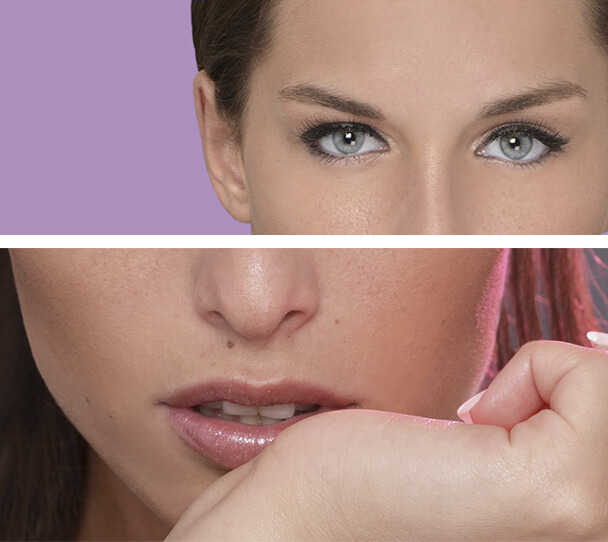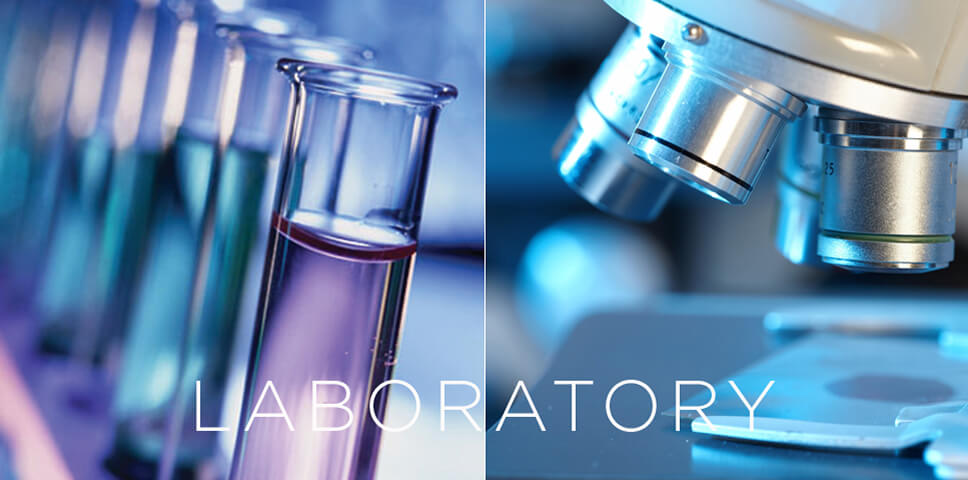

Skin Aging
Whether you’re 35 and just beginning to see the first signs of aging or 55 with skin that isn’t exactly keeping your birthday a secret, seeking ways to reduce wrinkles is probably on your agenda.
At the same time, experts say, many of us are losing the wrinkle battle, watching helplessly as the glow of youth goes on the dimmer switch.
As we age, inherited patterns for aging generally begin to show. Because cellular regeneration is slowing down, fine lines and wrinkles may begin to appear. Skin blemishes and some loss of hair are not uncommon. Fat loss may begin, resulting in excess skin that arranges itself in folds and sags. Initial signs are the horizontal lines seen crossing the forehead and some droopiness of the eyelids. Loss of fat in the cheeks causes the formation of puffy little jowls on either side of the chin. Lips may thin.
Ultraviolet light wrinkles, dries, and burns the skin, as well as increasing the odds you’ll develop skin cancer. But the sun is not your only enemy. Cigarette smoke and alcohol greatly accelerate the skin aging process.
Topical lotions that include ingredients such as peptides, vitamin C, alpha hydroxy acids and retinoids help increase cell turnover and stimulate collagen, the main building block of the skin that keeps it firm and elastic.
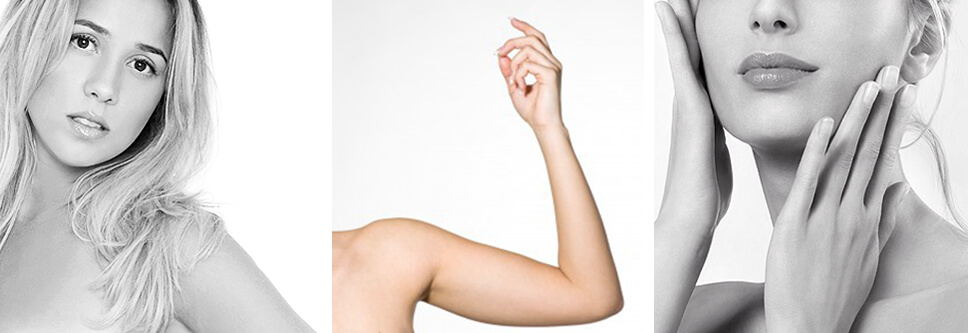
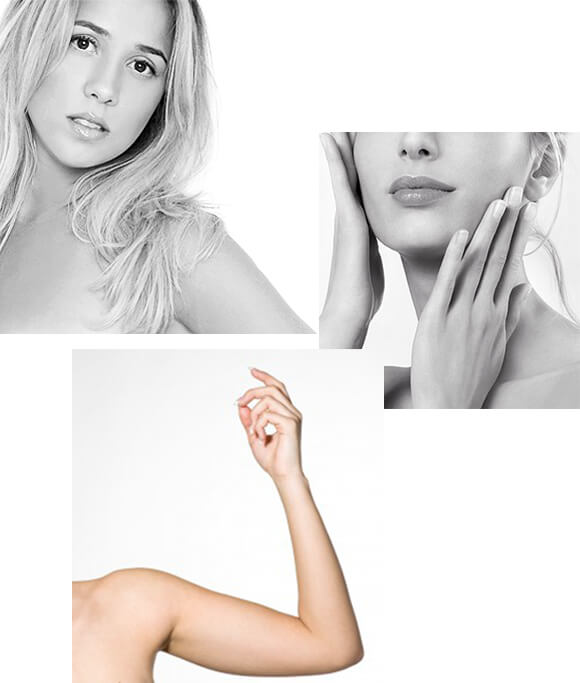
After years of research, we at Life Science Investments we do not agree that skin must deteriorate due to age. We insist that aging skin is a disease that we can do something about.
Our research, which utilizes all-natural formulas, led to a better understanding of the mechanism of the formation of wrinkles and how to fight them more efficiently in the recent years.
The peptides (amino acid polymers) are one of the latest advances in this field. They are composed of small molecules that can therefore pass through the skin barrier. They have the same activity as proteins and collagen or elastin that are usually absorbed with difficulty through the skin. Therefore, the peptides are increasingly used in dermo-cosmetic products and more particularly in the treatment of wrinkles and aging skin.
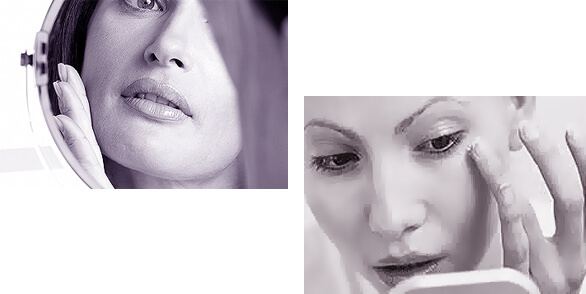
What Are Wrinkles?
Wrinkles, especially on the face, are an unsightly and irritating problem, but unfortunately ineluctable with aging.
Photo-aging makes our faces look much older than we’d like and probably than we feel.
A wrinkle is a fold, ridge or crease in the skin.
Wrinkles constitute one of the earliest visible signs of aging, if not the first.
Aging skin droops and develops wrinkles, lines and furrows.
The severity of these changes in an individual depends on genetic tendency, skin phototype (skin color) and exposure to various environmental factors.
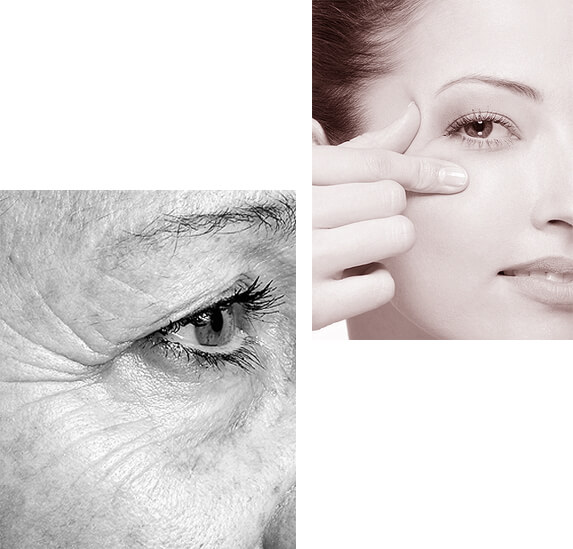
Wrinkles are classified as follows:
– Fine lines, arising because of irregular thickening of the dermis and because of a poor hydration of the epidermis.
They are mainly due to environmental factors such as sun damage, or smoking.
– Deeper lines, or furrows, are classified as dynamic or static.
Dynamic lines appear with the movement, i.e. the activity of facial muscles, whilst static lines are unchanged with muscles movements.
Dynamic lines tend to become static with aging.
· Crow’s feet around the eyes are due to smiling.
· Worry lines on the forehead.
· Frown lines between the eyebrows, when contracting or angry.
· Perioral lines (lips).
– Sags and bags
· Brow ptosis (the forehead sags so the eyebrows drop over the eyelids, which feel heavy).
· Eyelid ptosis (upper eyelid droops).
· Baggy upper and lower eyelids.
· Sagging lower eyelids.
· Loss of neckline.
· Elongated earlobes.
· Dropping of the tip of the nose.
· Thinning of the upper lip.
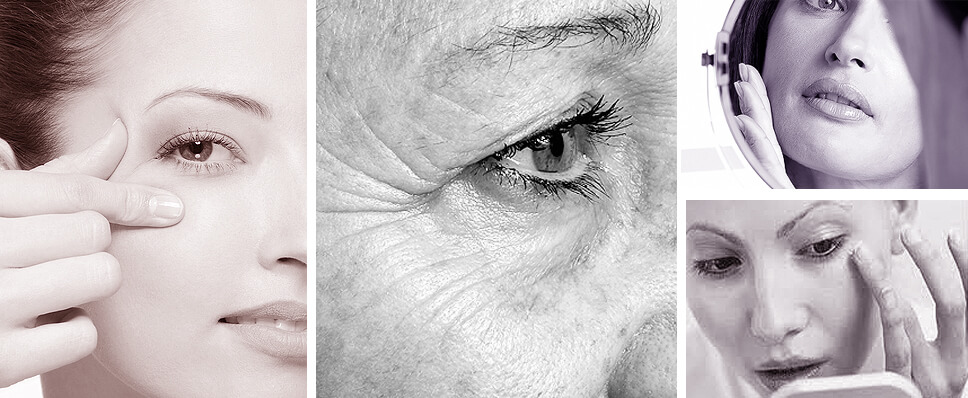
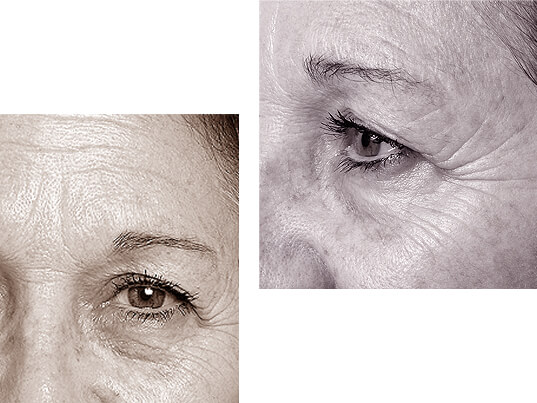
Chronological Occurrences
of Wrinkles
The skin is made up of 3 layers: the epidermis, dermis and subcutaneous tissue.
– The epidermis is the outer layer and functions as a barrier to the external environment.
The cells of the epidermis, named keratinocytes, are constantly moving from the bottom to the top layer, and then flake off. If this process becomes abnormal, the skin can look scaly.
– The dermis is the second layer, and contains the structural elements of the skin: the connective tissue. It is constituted by various elements: collagen, giving the skin its strength; glycosaminoglycans bringing to the skin its turgor, and elastin fibers giving the skin its elasticity.
Between epidermis and dermis is laying the dermal-epidermal junction (DEJ), interlocking forming fingerlike projections called rete ridges. Epidermal cells are fed from the blood vessels in the dermis, and the rete ridges increase the surface area of the epidermis in contact with the blood vessels.
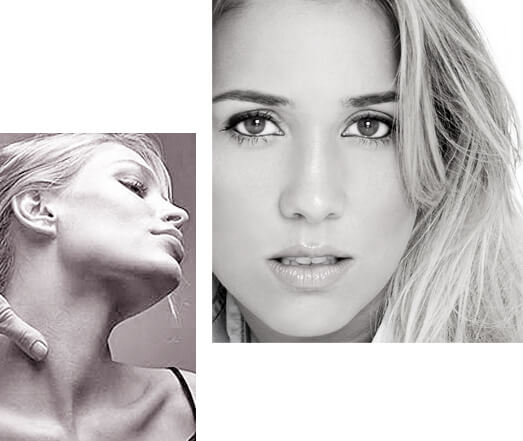
– The subcutaneous tissue is the bottom layer of the skin, containing fat cells which make the skin plump and full.
When aging, the epidermal cells become thinner and less sticky, making the skin look thinner, and decreasing the effectiveness of the barrier function, increasing water loss and thus reducing skin hydration, causing dryness.
There are also significant effects of aging on dermis. The production of collagen is decreased, and collagen fibers gather in bundles, losing their effectiveness. Elastin fibers also wear out. Taken together, these changes cause the skin to wrinkle and sag.
The rete ridges of the dermal-epidermal junction flatten out, inhibiting the correct process of bringing nutriments to the epidermis.
In the subcutaneous tissue, fat cells get smaller, leading to more noticeable wrinkles and sagging.
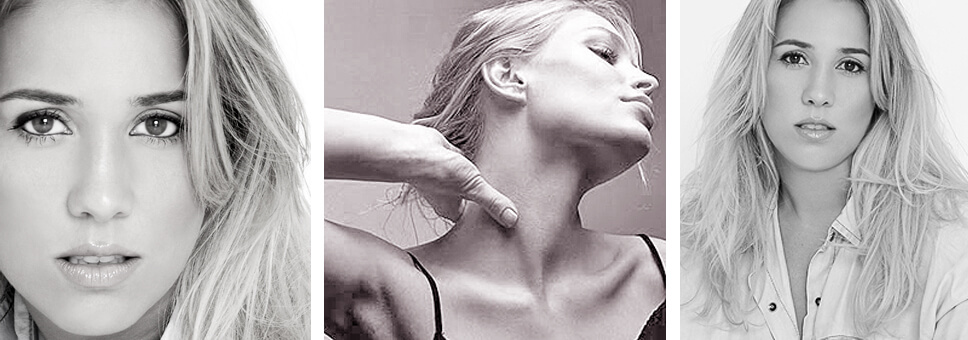
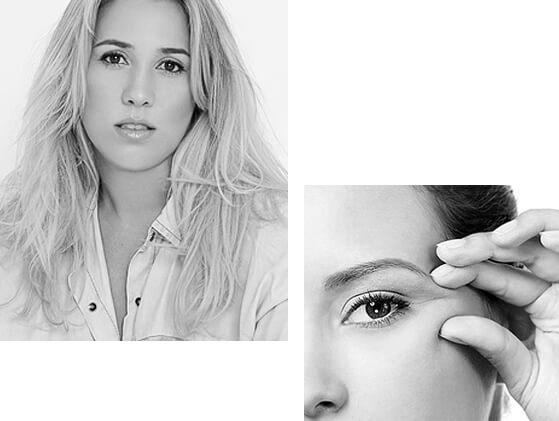
What is the Best Anti-Wrinkles Treatment?
The definition of the best Anti-wrinkles cosmetic treatment is always difficult to establish.
Nonetheless, in the mind of LSI’s investigators and scientists, an ideal anti-wrinkles treatment should work at different levels:
– Epidermis: this is the first target of any cosmetic product.
It is of utmost importance maintaining a good hydration status of the epidermis, in order to guarantee the barrier function but also avoid scaly appearance of the skin.
– Dermal-epidermal junction has a key role in the nutrition of the epidermal cells.
With aging, the rete ridges of DEJ are unfolding and taking an even appearance.
The challenge is reversing this physiological process by folding again the rete ridges.
– Dermis is another major target for an anti-aging cosmetic.
To restore the firmness of the skin, we should improve the cohesion of connective tissue, but also increase the production of dermal proteins such as collagen, elastin and laminins.


